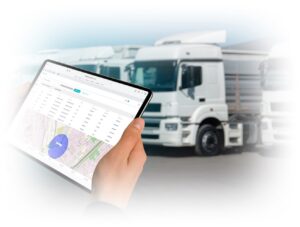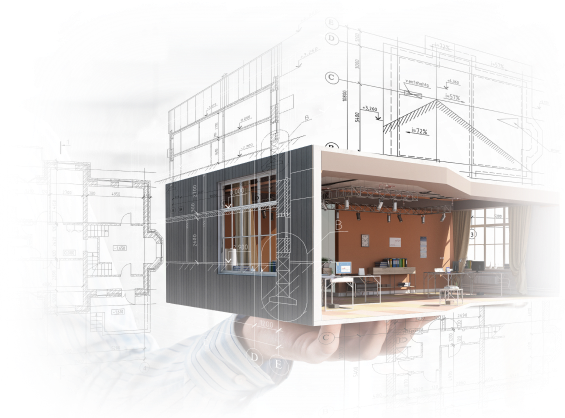Digital Twins: Bridging the Physical and Digital Worlds in Real-Time
Delve into the world of Digital Twins and discover how they’re reshaping the boundaries between the physical and digital. Harnessing Interactive 3D technologies, Digital Twins offer real-time insights, bridging the gap in the age of comprehensive digitalization.

In the era of digital transformation, the line between the physical and digital realms is becoming increasingly blurred. One of the most groundbreaking innovations leading this convergence is the concept of “Digital Twins.” Merging Interactive 3D technologies with real-time data, Digital Twins offer a dynamic representation of physical assets in the digital space. Let’s explore how this fusion is revolutionizing industries and why it’s at the forefront of modern digitalization.
The Essence of Digital Twins
At its core, a Digital Twin is an Interactive 3D replica of a physical entity, be it a product, system, or even an entire city. These digital counterparts are not just static models; they evolve, adapt, and respond to changes in their physical counterparts in real-time.
The Role of Interactive 3D in Digital Twins
Interactive 3D technologies are pivotal in bringing Digital Twins to life. They allow users to explore, manipulate, and engage with these digital replicas in an immersive environment. Whether it’s visualizing the inner workings of a machine or simulating the flow of traffic in a digital city, Interactive 3D provides a tangible interface to the abstract data.
Digital Twins in the Age of Digitalization
As industries move towards comprehensive digitalization, Digital Twins serve as a bridge, connecting physical assets with digital platforms. They offer:
- Real-time Monitoring: By syncing with sensors and IoT devices, Digital Twins provide real-time insights into the status, health, and performance of physical assets.
- Predictive Maintenance: Through data analysis, Digital Twins can predict when a component might fail, allowing for proactive maintenance.
- Optimized Operations: By simulating different scenarios, companies can determine the most efficient operational strategies.
The Future of Digital Twins and Digitalization
The potential applications of Digital Twins are vast, from healthcare and manufacturing to urban planning and environmental monitoring. As the drive for digitalization intensifies, the integration of Interactive 3D technologies and Digital Twins will become even more intrinsic, offering unparalleled insights and control over the physical world from the digital realm.
Conclusion
Digital Twins represent the epitome of modern digitalization, seamlessly merging the tangible and intangible. By harnessing the power of Interactive 3D technologies, they offer a real-time window into the physical world, promising a future where our ability to understand, predict, and optimize is unparalleled.
Tell us about your project
Lets get in touch





 Every company that works with transport understands that in the absence of automated fleet management systems, all processes require almost round-the-clock work of a considerable staff of people – dispatchers, logisticians, forwarders, accountants. Depending on the fleet size, the company’s field of activity, the number of delivery orders, and seasonality, the fleet can be served by huge departments that continuously deal with the paperwork and monitor drivers on the phone. Most companies went through this 10-15 years ago, and many are trying to automate their fleet. During this time, a lot of online platforms for transport monitoring have appeared, which partially solve these problems: they optimize the work of personnel, reduce transport costs and help restrain the growing number of employees in the transport department. At the same time, there is a vast number of low-quality monitoring systems: some are very limited in their functionality and do not advance in any way, and some have a massive number of functions that are superfluous for most customers, their interface is too complex and overloaded. Also, many manufacturers of GPS trackers have their own software, which is compatible only with their equipment, and if you want to change the software for some reason, you have to invest in new equipment.
Every company that works with transport understands that in the absence of automated fleet management systems, all processes require almost round-the-clock work of a considerable staff of people – dispatchers, logisticians, forwarders, accountants. Depending on the fleet size, the company’s field of activity, the number of delivery orders, and seasonality, the fleet can be served by huge departments that continuously deal with the paperwork and monitor drivers on the phone. Most companies went through this 10-15 years ago, and many are trying to automate their fleet. During this time, a lot of online platforms for transport monitoring have appeared, which partially solve these problems: they optimize the work of personnel, reduce transport costs and help restrain the growing number of employees in the transport department. At the same time, there is a vast number of low-quality monitoring systems: some are very limited in their functionality and do not advance in any way, and some have a massive number of functions that are superfluous for most customers, their interface is too complex and overloaded. Also, many manufacturers of GPS trackers have their own software, which is compatible only with their equipment, and if you want to change the software for some reason, you have to invest in new equipment. Everyone – system architects, back-end and front-end developers, UI/UX designers, quality control specialists and of course project managers and product managers understand the business values of our customers and do their best to create advanced features with maximum convenience.
Everyone – system architects, back-end and front-end developers, UI/UX designers, quality control specialists and of course project managers and product managers understand the business values of our customers and do their best to create advanced features with maximum convenience.











 In general, all these tools work and can meet the basic needs of the target audience. But there are so many cases when your property is special: it is substantial, has unique architectural features, or is located in a unique neighborhood. Of course, all this has to be adequately demonstrated to a potential investor or client, and you want them to get a hold of the whole “idea” of the property.
In general, all these tools work and can meet the basic needs of the target audience. But there are so many cases when your property is special: it is substantial, has unique architectural features, or is located in a unique neighborhood. Of course, all this has to be adequately demonstrated to a potential investor or client, and you want them to get a hold of the whole “idea” of the property.

 Bees are dying from a variety of factors—pesticides, drought, habitat destruction, nutrition deficit, air pollution, global warming, and more, but it is humans who are directly responsible for the two most prominent causes: pesticides and habitat loss.
Bees are dying from a variety of factors—pesticides, drought, habitat destruction, nutrition deficit, air pollution, global warming, and more, but it is humans who are directly responsible for the two most prominent causes: pesticides and habitat loss. Considering our extensive experience developing IoT solutions, we decided to calculate how much such a device of our own production would cost. During our research, we held a series of consultations with experienced beekeepers and learned about their main concerns and problems in working with bees. Next, we examined the most popular available solutions on the market, and it was evident that none of them provided the entire required set of sensors for complex monitoring.
Considering our extensive experience developing IoT solutions, we decided to calculate how much such a device of our own production would cost. During our research, we held a series of consultations with experienced beekeepers and learned about their main concerns and problems in working with bees. Next, we examined the most popular available solutions on the market, and it was evident that none of them provided the entire required set of sensors for complex monitoring.
 But what if it comes to customizing something more complex such as a home or a car? With such objects, unsuccessful decisions can not only significantly affect the state of our bank account but also negatively reflect on our emotional well-being. Yes, you can turn to designers, who will offer their vision and options, but this again entails spending time and money and does not guarantee a successful result.
But what if it comes to customizing something more complex such as a home or a car? With such objects, unsuccessful decisions can not only significantly affect the state of our bank account but also negatively reflect on our emotional well-being. Yes, you can turn to designers, who will offer their vision and options, but this again entails spending time and money and does not guarantee a successful result. perience working with complex digital 3D assets, but during their development, there was no task of creating a mechanism for deep customization.
perience working with complex digital 3D assets, but during their development, there was no task of creating a mechanism for deep customization.


















